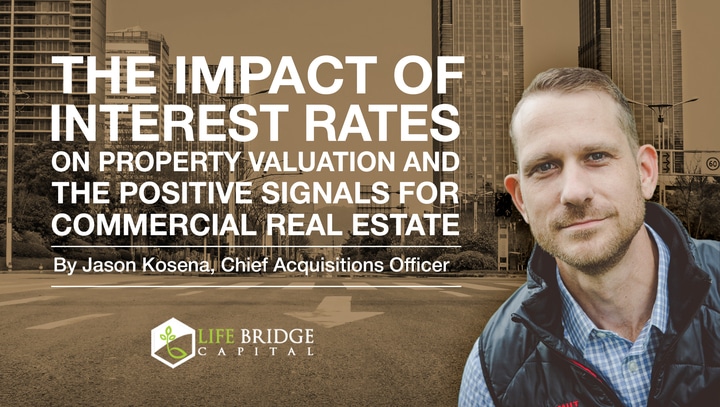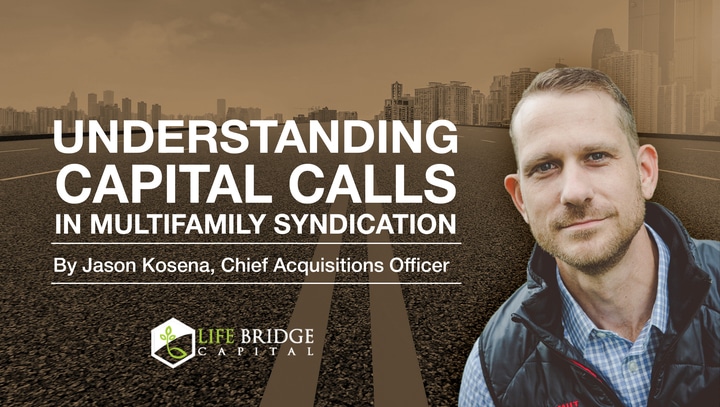Within the real estate world, housing targeted at those 55 and older remains a separate niche from the general market. Senior housing comes with its own regulations, market changes, and investment opportunities that reflect the needs of the second half of our lives. This article addresses all you need to know about investing in senior housing and may even motivate you to invest in senior market real estate to prepare for your own golden years.
Life Bridge Capital is a leading real estate syndication company. We offer our investment partners the opportunity to leverage shares of multifamily rental properties into a passive monthly income. Learn More
The Silver Wave is Shaping Housing
The 2020 Census report confirmed what demographers have long expected: America is an aging country where the old will soon outnumber the young. By the next census in 2030, all 70 million of the country’s Baby Boomers will be at least 65.
Real estate and healthcare industries, and the point where they intersect, are two industries most under stress from changes that come with an aging population. Wise investors can use this knowledge to benefit from the inevitability of aging.
With such a large segment of the population reaching their retirement years, failing to identify their needs and preferences is a missed opportunity. No two seniors are the same, but their generation has some marked characteristics that give investors some insight for areas of growth:
Today’s Seniors Value Independence
Today’s senior housing market is unlike any in the past. For the length of human history, aging relatives returned to their families or received care from the community. Today, alternatives exist for both those without a support system and those who simply want to retain independence for as long as possible.
Thanks to longer lifespans and medical advancements, life does not end at 65. We travel, recreate, and do as much as possible for as long as bodies and budgets allow.
The senior housing market reflects these modern goals by providing a range of housing types that accommodate everyone from healthy, active adults to those who need constant medical care. Most of all, senior housing is not simply where people go to die. For many, it’s where they go to live out the promises of retirement.
Senior Housing Demand Varies by Location
When considering investment opportunities, know that senior housing trends vary widely based on the state or location. The stereotype of retirees flocking to warm weather in winter is based in truth. California and Florida have some of the highest populations of older adults, and consequently, the highest costs for senior housing.
The Pandemic Changed Assumptions About Senior Living
The pandemic introduced extreme amounts of uncertainty to the previously red-hot senior living market. Residents and their families now approach communal care settings with caution, if not outright fear. As a result, facilities must find ways to adapt and mitigate those concerns or face lower demand as families decide to take on home care to keep loved ones safe.
Conversely, a year of lockdowns for a virus that was most dangerous for the elderly also demonstrated the dangers of isolation and the values of social connections. If facilities make changes to ensure safety, they can capitalize on this much-recognized need for human connection.
Perhaps most importantly, the pandemic brought the importance of medical care in these facilities to the forefront. Suddenly it became very apparent that protecting and nurturing residents was the most critical feature of these businesses.
Types of Senior Living Properties
Senior housing comes in many shapes and sizes to meet the wide range of needs of an aging population. Across the board, seniors desire to live in the least restrictive and most independent setting that meets their safety needs. When deciding properties for investment, consider the demand for each type of property in the subject area:
Age-Restricted Communities
The most independent seniors flock to age-restricted communities, which are neighborhoods that look much like any other suburban neighborhood but cater to the unique needs of people 55 and older.
Age-restricted communities appeal to older Americans who appreciate amenities tailored to the later stages of life and the homogeneity of being surrounded by their own generation. They often feature organized social activities, clubhouses, and easy-to-access services.
To maintain their protected status that allows them to reject owners and tenants based on age, the communities must carefully follow federal guidelines regarding the number of younger people it permits. Under the 80/20 rule, communities designated for those over 55 can allow a small number of households where no residents meet the minimum age restriction.
Ultimately, each community can set its bylaws with age requirements and conditions for property use. For example, some communities do not allow any children to reside there, regardless of the age and circumstance of the homeowners. In contrast, others allow minors to live there as long as one senior also lives in the home.
Investors may purchase individual homes in these neighborhoods if they meet the community’s requirements. Otherwise, regardless of age, investors can still profit from age-restricted communities through REITs and syndications.
Assisted Living Facilities
When an older adult loses the ability to live independently safely, assisted-living facilities are the next step in care. They give residents independence and privacy in the form of separate apartments or living and sleeping spaces.
Staff can help residents with basic tasks like laundry, cooking, and cleaning. In addition, staff and fellow residents provide companionship and ensure that someone checks in on the resident. Assisted living facilities may have a doctor on staff or arrange transportation to nearby medical offices, and at minimum, will have nurses to dispense medications.
Assisted living facilities are usually large complexes. Greater numbers of units bring down the per-unit cost of providing amenities and services. Many parts of the country face assisted living shortages, making them fantastic investment opportunities. Unfortunately, in others, the market has been saturated to the point that units remain unfilled.
Nursing Homes
Nursing homes provide high levels of medical and vocational care to the residents. As such, they command high prices when paid for privately. Other nursing homes focus on the large percentage of Americans who rely on Medicaid for end-of-life care and are structured to succeed with primarily government payments.
Nursing homes are another form of senior housing in high demand. Based on the mechanics of aging, they are likely to remain that way. These facilities are also expensive to operate, so carefully review the specific finances of the subject property before investing.
Continuing-Care Retirement Communities (CCRCs)
CCRCs are a less well-known combination of all of the above senior housing types. A nursing home, assisted living facility, and age-restricted apartments all co-exist on the same campus to provide continuity of care and easy transitions throughout the escalating scale of care needs.
How to Invest in Senior Housing
Investors have many types of senior housing properties to choose from as well as several investment vehicles to find the right fit in any portfolio:
Real Estate Investment Trusts (REITs)
REITs provide low points of entry with little time commitment, making them a perfect investment method for those new to the realm of senior housing. REITs are publicly traded companies that invest in real estate. In turn, investors can purchase shares of REITs with the hopes of earning high dividends and seeing their shares appreciate.
REITs often concentrate on a specific type of commercial property, like shopping malls or medical offices, allowing investors to find specialized REITs. Some even focus exclusively on senior housing. When choosing an REIT to invest in, be sure to carefully research the company and its management.
Project Ownership
To actively invest in an assisted living facility or nursing home, consider renting it to a third-party operator or management company. Doing so allows the owner to realize the financial benefits of the senior living market without becoming bogged down with the medical requirements. Owners can then enjoy passive income from rent collection and other fees.
Real Estate Syndications
Real estate syndications sit between REITs and direct ownership, offering many benefits for investors who want to earn a passive income.
Syndications are companies that purchase an income-producing property and hold it for 5 to 8 years before selling it and realizing profits from the increased value. Syndications are unique in that about 90 percent of funding comes from a limited pool of passive investors called limited partners.
A project sponsor runs the syndication, finds and vests the property, and then installs a property management company or otherwise creates a way to manage it. Meanwhile, individual investors earn a passive income through rent collection according to the terms of the deal—allowing the project sponsor to handle all the legwork of the project.
Many real estate syndication projects focus on undervalued multifamily housing properties, which can then be updated to increase the property value at time of sale through forced appreciation. Some syndications may focus on the senior housing market as well.
Pros and Cons of Investing in Senior Housing
There are several benefits to investing in senior housing, but the market also has its weak points. Consequently, investors need to enter the field with their eyes wide open regarding the reality of senior living. Here are some pros and cons of senior housing investing to consider:
Advantages of Senior Housing Investing
In addition to the demand created by Baby Boomers, longer lifespans generate a scenario in which senior housing properties have both a large clientele and one that will need the services for an extended period of time.
For social and medical reasons, residents and their families benefit from care stability, so there is a disincentive for residents to leave adequate facilities. Then, once someone is in a position to need care, they are unlikely to return to independent living. These factors reduce tenant turnover and unit vacancy.
Much like traditional multifamily housing, senior housing brings the benefits of a steady income and property appreciation to be realized when the property is sold. The National Council of Real Estate Professional Fiduciaries reports consistently strong returns within the senior housing market with a ROI of 13 percent over the last ten years.
Disadvantages of Senior Housing Investing
Many of the factors that make senior housing investment advantageous have a less-fortunate flip side.
Tenants may stay in one place for a long time, but there will be turnover due to death and greater medical needs. And, unlike traditional rentals, these vacancies are unpredictable and not based on a lease term.
When vacancies occur, the age and other restrictions can make it challenging to quickly replace the former resident. The most in-demand facilities have wait lists, but that is the exception rather than the rule.
And finally, America has a large aging population, but many of them do not have savings sufficient to support them until the end of their lives. The silver wave will split into several streams. Of course, one option is high-end care that promotes independent and fulfilling livelihoods. Others will be limited to facilities that accept Medicaid. And still others will skip senior housing altogether and find care with family members. It is up to wise investors to predict the flow of demand in their target market.
Final Thoughts
Old age comes to us all. Investors can benefit from that certainty to add in-demand income-producing properties to their portfolios. But, while demographics indicate ongoing demand, economic factors may shake the foundation of the senior housing market. Investors should use caution and carefully research any prospective properties.
Life Bridge Capital is a leading real estate syndication company. We offer our investment partners the opportunity to leverage shares of multifamily rental properties into a passive monthly income. Learn More


